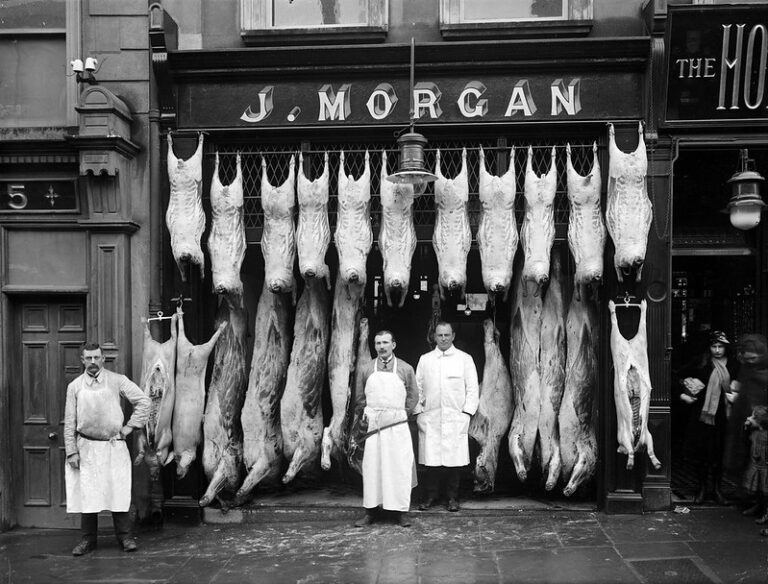What Do Our Monsters Say About Us?

When we picture something monstrous, more often than not we conjure up something hulking and frightening, something we are unable to easily categorize or make sense of. But there is usually a fascination woven into the fear, too. How many of us had a fleeting—or not so fleeting—interest in the Mothman, the Loch Ness Monster, Big Foot, or one of their cryptid kin? These and others are the frequent subject of various forms of media—television shows, movies, comics, books, games. Naturally, with their continued popularity came the rise of theories to explain what piques our interest in these stories and what our monsters say about us. The Monster Theory Reader, edited by Jeffrey Andrew Weinstock, closely examines the different ways monstrosity manifests in all media, ranging from historical myths to modern film, and how what is monstrous has changed over time.
In the introduction to the volume, Weinstock explains that the term monster comes from the Latin monstrum, which relates to revealing something, or to warning or portending. The earliest examples of monstrous things that Weinstock draws from are ancient chronicles trying to make sense of birth defects in both animals and humans, often linking these “monstrous” offspring with something “wrong” with the mother or a sign of larger societal or historical happenings. From early on, the role of the monster is intended to reveal something about the beholder or about the world they were born into rather than offering any information on the monster itself.
For anyone familiar with monster stories, and even the horror genre in general, this notion holds true across most of the canon. The classic literary example of Frankenstein’s monster in Mary Shelley’s Frankenstein follows this same function: through encountering the monster’s very human desires and the cruel ways the world thwarts them, readers realize how monstrous Victor Frankenstein himself is, and we begin to feel sympathy for the creature we are conditioned to feel is inherently wrong. In this vein, what many of the essays in The Monster Theory Reader attempt to do is to turn the eye back onto the reader, asking us to question what our monsters say about ourselves.
In an essay for The Offing, “The Girl, the Well, the Ring,” Zefyr Lisowski writes about seeing the popular horror movie The Ring and, rather than simply enjoying a scare, saw something of herself and her experience with chronic illness in Samara, the titular ghost girl—the monster—of the film. Lisowski writes, “A point The Ring makes inadvertently is how interconnected all monstrosities are. The young dead girl who’s the villain is different and sick, so she becomes a recipient of violence. She becomes a recipient of violence, so she becomes an enactor of violence. Then, only then, do the deaths start.” Lisowski’s incisive analysis of The Ring highlights the critical work of monster theory in unveiling how easy it is to consume something when it is framed a certain way. As she writes a little earlier in her essay, “As a child, no one talked about why The Ring was scary, just about it as a state of being.” One key point that the essays within The Monster Theory Reader bring up repeatedly is how monsters are both culturally and historically specific, as well as how easy it is to accept monstrosity at face value, with little to no critical consideration. Something is monstrous as its very state of being.
When the monstrous hinges on the spectator, the monster becomes a shape-shifter that is able to fit the confines of particular societal or historical anxieties. While the image of the zombie, for example, has undergone several iterations since it first broke into Western consciousness through sensationalized accounts of Haitian voodoo, the undead have represented multiple anxieties having to do with perceived decay of the status quo. In the essay, “The Undead: A Haunted Whiteness,” Annalee Newitz writes:
Stories about the undead are best understood in the context of anxieties about many kinds of race relationships that develop in the wake of colonialism. The undead are liminal beings who exist between the worlds of life and death. They represent the sorts of identities that erupt into being when different racial groups collide violently with one another and produce horrifying new cultures of deprivation and oppression.
Newitz dives into the representation of the undead in both film and literature, unpacking how they are used, including by famed horror writer H.P. Lovecraft, as the specter of economic and structural histories under imperialism and colonialism—“in their death throes.” As Newitz points out, even when the world around the monster changes, we are still haunted by it as a constant reminder of the horrors of the past. Zombies in particular, which remain suspended in a state of not-dead-not-quite-living, tell us that they, and what they represent, could always come back and clash with the modern world.
Michael Dylan Foster’s contribution to the anthology, “Haunting Modernity: Tanuki, Trains, and Transformations in Japan,” provides an example of the clash between past and present through the exploration of the tanuki, a shape-shifting supernatural creature that has a long history in Japanese folklore, and the advent of the steam train. The tanuki and the train collided during the rapid industrialization and modernization of Japan during the Meiji period, where the ideology of progress and Westernization led to a flood of new technologies into Japan, including the steam train. Foster writes, “During the Meiji period, the train was the literal vehicle through which modern regularized (urban) time was introduced into the countryside.” From this uneven clash of modernity across Japan came stories of phantom trains and tanuki who either tried to thwart the trains or were, sadly, supposedly run over in the process. Foster writes, “whether the [story] teller/listener cheers for the tanuki or the train, the popularity and ubiquity of these narratives reflects ambivalence to the changes that were occurring throughout the nation; the tanuki—even as he is killed—is a symbol of the sacrifices made for the sake of modernity.”
While the undead and tanuki are vastly different in their traditional outward appearances, both reveal the way monsters linger as reminders of what has been lost, what has been forcibly put into place, and what, ultimately, was sacrificed. While monsters are often closely linked with horror and hauntings, there is also another side to the monstrous, which Donna Haraway unpacks in her essay, “The Promise of Monsters.” The monster does not need to remain a figment of the past, doomed to be a haunting rather than an active agent in changing the world. As Haraway argues, what monsters may provide for us is “an inescapable possibility for changing maps of the world, for building new collectives out of what is not quite a plethora of human and inhuman actors.” Rather than being emblems that anchor us to the past, the monster can be the vehicles that propel us into many possible futures.
Haraway’s essay, appearing near the end of the anthology, acts as a call to rethink received narratives, wrapping up a collection that forces readers to reconsider their own monsters and what these monsters say about us. In the real world, monstrosity is used as a vague catch-all to justify acts of violence and even murder; these essays offer readers a digestible and critical examination of the monstrous as a way to force us to consider the politics behind what we deem monstrous, and how a deeper understanding of what haunts us may lead to a new, previously unimagined, future.


